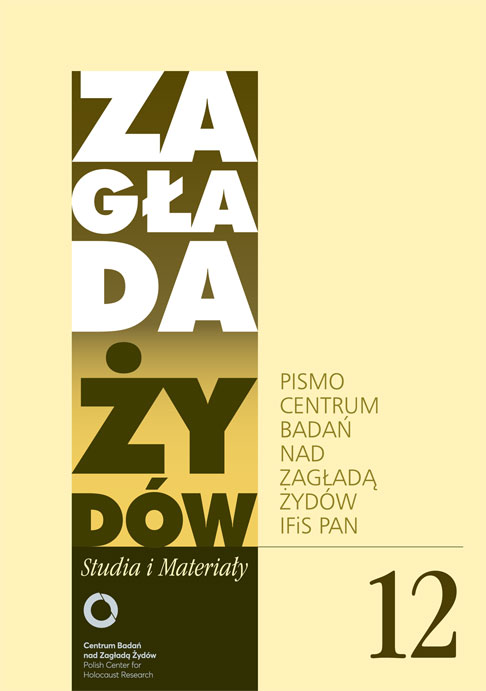Zagłada jako horror. Kilka uwag o literaturze polskiej 1985–2015
The Holocaust as a Horror. A Handful of Comments on Polish Literature during 1985–2015
Author(s): Przemysław CzaplińskiSubject(s): Cultural history, Social history, Recent History (1900 till today), Pragmatics, Polish Literature, Fascism, Nazism and WW II, History of the Holocaust, Philology
Published by: Stowarzyszenie Centrum Badań nad Zagładą Żydów & IFiS PAN
Keywords: Holocaust; horror; dread; disgust;
Summary/Abstract: The author suggests that the depictions of the Holocaust in Polish literature of 1918–2014 should be categorized as horror. From the chronological perspective, Czapliński divides those thirty years into three shorter periods: 1) the initial period (from Claude Lanzmann’s Shoah and Jan Błoński’s essay “The Poor Poles Look at the Ghetto” to Wilhelm Dichter’s and Michał Głowiński’s memoirs) was dominated by white horror, which presented Jews as ghosts demanding a place in the Polish memory; 2) during the second period (from Marek Bieńczyk’s Tworki and Jan Tomasz Gross’ Neighbors until the end of the 2010s) the horror poetics was used to reveal those principles of pre-war and occupation-period normality which helped the Germans conduct the Holocaust and which conditioned the exclusion of Jews from the Polish circle of ‘normal humanity’; 3) during the third period (from Gross’s Golden Harvest until now) Jews return as the undead, violating the rules of distance and obliging Poles to physically touch the disgusting topic of the Holocaust. The contact with the Holocaust as something abhorring becomes a condition for self-knowledge, purging, and establishment of a new imaginary community.
Journal: Zagłada Żydów. Studia i Materiały
- Issue Year: 2016
- Issue No: 12
- Page Range: 375-394
- Page Count: 20
- Language: Polish

